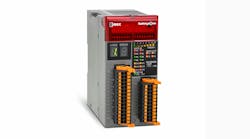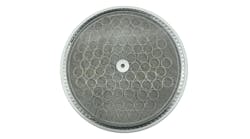MicrO2 Advantage Series Blending System for carbonated soft drinks (CSD) deaerates blended product to achieve significantly lower dissolved oxygen (DO) and nitrogen levels than traditional blending systems that feed can and bottle fillers. With lower DO levels, MicrO2 supports higher filling speeds, improves fill weight control to increase yields, reduces operating costs and helps retain superior flavor over the shelf life of the packaged beverage.
Unlike systems that deaerate prior to blending, MicrO2 deaerates fully-blended product. Compared to traditional systems that deliver DO levels of 1.8 parts per million (ppm) to the filler, MicrO2 typically delivers DO levels of 0.1 ppm for sugary soft drinks and 0.3 ppm for diet soft drinks. With MicrO2, MicroBlend guarantees a DO level of 0.8 ppm or less for a packaged product, even if the filler picks up oxygen during the filling process. Modern fillers with pre-purge systems and older fillers that have been modified with a basic bowl purge will minimize the reintroduction of oxygen after MicrO2 to maintain DO levels of 0.1 to 0.3 ppm in the packaged product.
Reducing DO levels improves the stability of the beverage during packaging. With less foaming, MicrO2 supports higher filling speeds, allows for higher product temperatures to reduce refrigeration costs and improves net weight control to increase yields. Lower product volatility also minimizes opportunities for expelled gases to be reintroduced, which keeps DO levels down during filling, and results in greater CO2 consistency.
A further benefit of MicrO2 is that reduced DO levels in the packaged product helps to maintain the flavor of the beverage throughout its expected shelf life and potentially provides increased shelf life.
MicrO2 is perfect for CSD beverage manufacturers filling steel or aluminum cans as well as PET or glass bottles. It is ideal for use with cans that feature new, first-generation BPA-NI (BPA non-intent) liners that are more susceptible to DO than BPA-lined cans. This is particularly important when using cans from canmakers that guarantee “no leakers” only for filled cans with DO levels less than 1.2 ppm.
Traditional blending systems use either CO2, vacuum or membrane technology to deaerate the water prior to blending. This allows the DO that is naturally present in the syrup to be introduced to the blended product and results in higher DO levels. Even if the syrup is deaerated prior to blending, the latent volatility of traditionally blended product picks up oxygen and results in elevated DO levels.
The proprietary MicrO2 process uses sparging technology to inject CO2 into a blended product to deaerate the entire mix and achieve low DO levels. Most of the CO2 used to deaerate is retained, at which time the system increases pump pressure and injects the additional required CO2 to carbonate the product to the customer’s specifications.
Additionally, by eliminating vacuum or membrane deaeration used on traditional systems, MicrO2 offers a more compact footprint and presents fewer moving parts and fewer wear parts to reduce maintenance. With less energy and CO2 consumption, MicrO2 minimizes operating costs. Rebates associated with energy-saving programs may be available from utility providers before and/or after installation to further reduce investment costs and improve ROI.
Equipped with MicroBlend’s standard tanks, MicrO2 blends and carbonates 50 to 180 gallons per minute. Larger, optional tanks enable MicrO2 to produce up to 250 gallons per minute. The systems can typically be changed over to handle a new product in less than 10 minutes, depending on the size of the filler. With the addition of MicroBlend’s independent rinsing option, product changeovers can be accomplished in eight to eight-and-a-half minutes. Compared to traditional blending systems that require a vacuum deaerator or membranes to be cleaned, MicrO2 offers an inherently more sanitary design because deaeration occurs within the filler’s normal CIP (clean-in-place) path.





